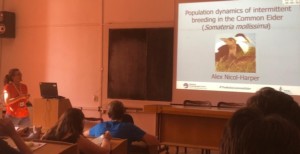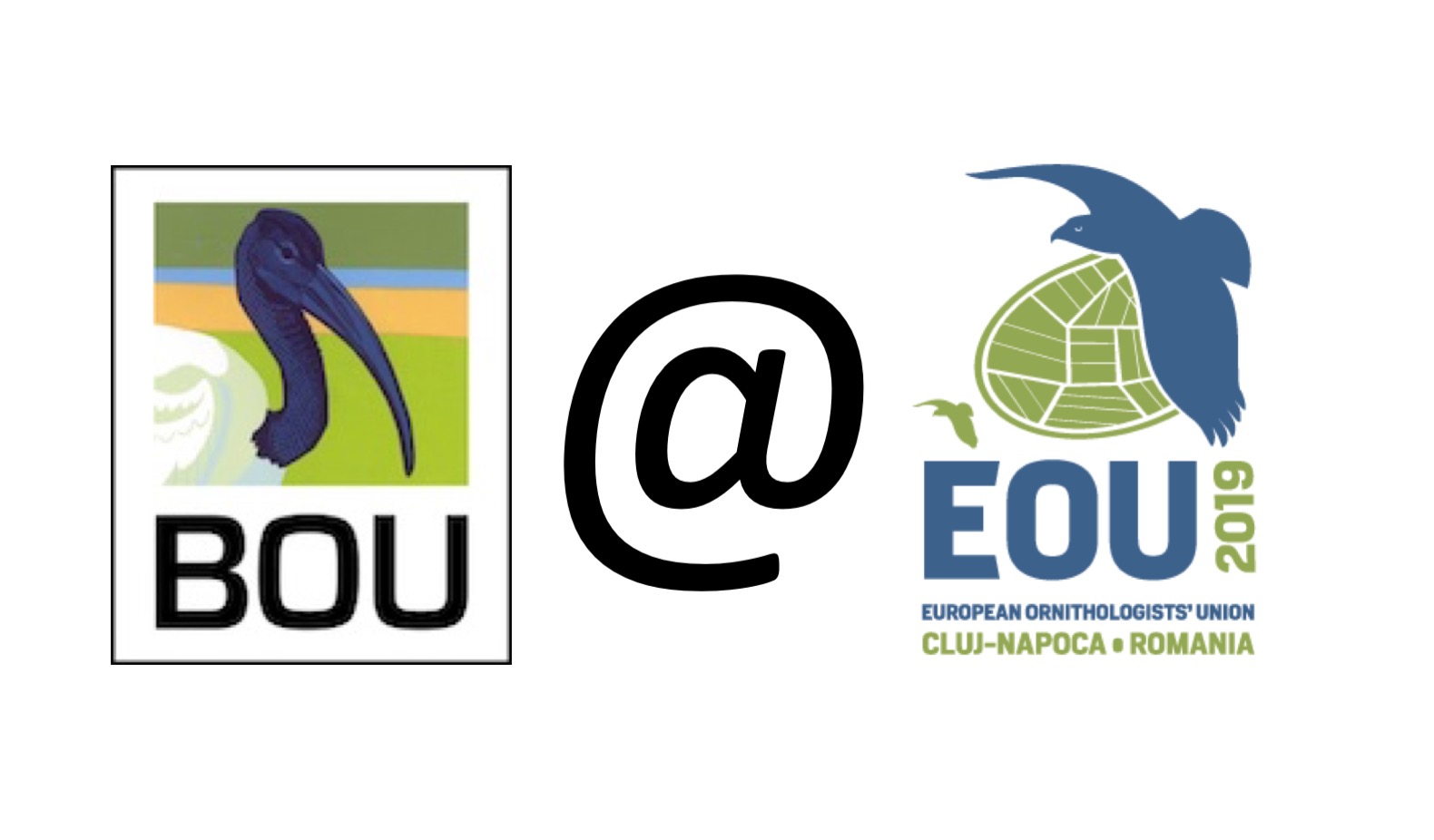“EOU2019 was the place to be and be seen for early career ornithologists”
For the first big conference presentation of my PhD, I spoke in the Population Ecology session of EOU2019, on ‘Population dynamics of intermittent breeding in the Common Eider (Somateria mollissima)’. The results I presented were derived through matrix population modelling: a method broadly applicable to ecology and wildlife management, but unavoidably mathematical – so it’s important for me to practise clear explanations for those who don’t necessarily have a mathematics background… I hope I was successful! My talk certainly prompted some interesting conversations with other attendees, and increased my confidence for my next presentation.

Alex presenting her work on Common Eider
Even before arriving in Romania, as I boarded my flight to Cluj-Napoca, I had already spotted three fellow EOU2019 attendees; old bird conference tees being the usual give-away, and a conversation starter I was able to employ later in the week. Cluj – despite being Romania’s second most populous city – had a small-town feel, with conference tote bags popping up everywhere, facilitating further introductions.
Networking with fellow European ornithologists was particularly valuable, since seaduck-specific conferences tend to be North America-focussed, while my interests span the full circumpolar range. I also ended up re-connecting with some friends from last years IOC in Vancouver, which was a lovely bonus; I hope to visit some when I attend a working group close to their institution next year. In light of Brexit, I feel that it is increasingly important for British scientists to demonstrate that we continue to support international collaboration and friendship. The UK has the 6th largest contingent at EOU2019, which hopefully helped to keep British ornithology embedded within a wider European context during this uncertain period.
As for the conference itself, I highly commend the local organising committee, who not only delivered all the core features of a well-run event, but added charming personal touches, including a traditional Romanian craft market in the coffee courtyard, and stunning framed bird images by local photographers as thank you gifts presented to each of the plenary speakers and to EOU council members.
The conference was also notable for its great value for money. The registration fee – particularly for early birds and/or students – was modest, and in addition to the scientific programme included five meals, six coffee breaks, various evening drinks, and a day-long excursion with local guides! For the latter, I chose the Băişoara Mountains, which took us to over 1000m in the western Carpathians, with beautiful views and Nutcrackers aplenty.
As well as being easy on the wallet, EOU2019 seemed to me a very friendly place for ECRs. Before voting for the best presentation and poster, we were explicitly asked to consider more junior scientists, and several senior scientists made an effort to introduce themselves to me as we passed on the way to the lecture hall or at the conference dinner. The Fledglings meeting particularly enabled inter-ECR socialising, and I hope to attend their European Young Ornithologists’ meeting next year… see you there?
Many thanks to the BOU for supporting my attendance at EOU2019, and for the Twitter exposure in the run-up to my talk.
Nominate this article for a BOU Science Communication Award.




